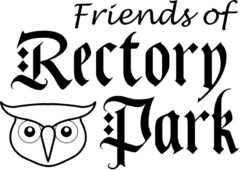
In the twelfth century, Jordan de Tornil was Constable of Wakefield and held the manor of Thornhill and others near Halifax.
In 1370, the heir to the Thornhill estates was a two year old girl, Elizabeth, and Sir John Savile of Elland & Tankersley , a wealthy local land owner , paid £126 to the then king for the right to choose a husband for her . This was his second son Henry who then acquired the Thornhill estates.
The son of Henry and Elizabeth was Sir Thomas Savile who made Thornhill the seat of the Savile’s and who lived at Thornhill Hall on what is now the island in Rectory Park.
Excavations on the island were carried out between 1964 and 1972 which showed that there had been two halls on the island. The earlier one was a large thirteenth century building with clay bonded foundation walls. This was superseded in 1450 by a stone H plan building which showed signs of reconstruction in the sixteenth century when it was given a paved floor, plaster walls and a chimney.
The moat dates from about 1450 and was allegedly as much a water feature and grand status symbol as a means of protecting the hall and its inhabitants.
The Savile family chapel was built in 1447 in the Church of St Michael and All Angels where the stone effigies of Sir John Savile and his two wives can be seen with the inscription:
Bones among stones lie full still: Whilst the soul wanders where God will.
Saxton’s map of 1602 shows that outside the island there was a walled garden, an orchard, and a bowling green. It also shows the dairy, stables, ox house, fish ponds and the L shaped barn of what is now Thornhill Hall Farm. The Rollson map of 1634 shows the great park which stretched as far south as the River Calder in the direction of Earlsheaton.
In 1624, Sir William Savile and his wife, Lady Anne and their two sons George (13) and William (12) were living at Thornhill Hall at a time when there were 43 persons also residing there. By 1637, the household list had increased to 57.
Sir William was frequently away fighting for the king in the Civil War and the household was run by Lady Anne. Sir William died at York in 1644 and was buried at Thornhill. His widow and her five children moved to the Savile estate at Rufford Abbey in Sherwood Forest where she continued to work for the royal cause and planned the taking of Pontefract Castle by royalist troops.
In 1648, 200 royalist men were sent from Pontefract Castle to Thornhill to obtain arms and provisions for the besieged garrison but Cromwell’s troops followed them with 700 troops of their own and laid siege to Thornhill Hall. However, before they could attack there was an explosion which blew up part of the hall and fire consumed most of the rest. The explosion was said to have been caused by gunpowder being accidentally lit but who was responsible will for ever remain a mystery.
There has been a church on the present site since the ninth century and a rectory has been in what is now the park since at least 1602 when it is shown on the Saxton map as “Parson’s House” on the site of what is now the Fieldhead Court Nursing Home.
When the park was part of the rectory grounds, it was closed to the public, except for one day a year, until 1947 when the rectory and the park were bought by the then Dewsbury Council. In 1952, Thornhill villagers produced a pageant in the park which was attended by thirteen thousand people and in 1972, a week long Thornhill Festival was held to celebrate the twentieth anniversary of the pageant.
More information can be found in the booklets published by a local historian, the late Barbara Nuttall , which are on sale in the Church of St Michael And All Angels . These are:
A History of Thornhill & Guide to The Church of St Michael and All Angels.
Life at Thornhill Hall in the Reign of Charles 1 : The Saviles of Thornhill.
Archaeology
The Thornhill Hall-Discover the Past project has now been completed. We have achieved all our project goals and have the interpretation panel sited by the moat in Rectory Park. We have compiled and had printed our leaflet giving a brief history of the Hall and Moated Site. If you want a copy of this leaflet please contact us using the website contact page and we will send one out.
We have a wealth of information relating to the Hall, the Moated Site and the park in general that we gathered whilst compiling the information for the panel and leaflet.
We would like to thank The Heritage Lottery Fund for their help and of course funding which allowed us to embark on this project.
